Kritika Verma
This was my first official internship in a different country, Nepal, at the Patan Museum, Lalitpur, Nepal. The Patan Museum was inaugurated in 1997 by his Late Majesty Bir Bikram Shah. The museum quadrangle, known as Keshav Chowk, takes its name from the temple in the centre of the central courtyard and is best known for its beautiful facade framing the golden door and window. This and the two adjacent squares have a long and vital history as a palace of the Malla kings of Patan.
The idea of establishing a new museum of Nepali art in this historic building was apparent. Two comprehensive state collections existed in Patan but needed more adequately displayed and researched. Most of the sculptures in these collections are stolen objects that Nepali police and customs have recovered. The main galleries are devoted to Hindu and Buddhist sculptures of Nepal, many of which were created in the nearby workshops of this city, a centre of metal craft for the region. The technique of ‘lost wax’ metal casting and repose is explained in the technology gallery.
Patan has always been a Newar city, and its fame as a centre of art, architecture and craft is based on the work of the Newars. In attempting to trace the identity of the Newars, one cannot use the standard rules of ethnic or racial identity. The Newars are not, in fact, an ethnic group and, in this sense, are markedly different from most of the people who inhabit Nepal. They are, most simply put, a group of people from diverse ethnic, social, and geographical origins who have all come, over time, to share the same language and homeland (Kathmandu Valley). As this definition implies, language and culture are at the heart, indeed, are the sum of the identity of the Nears. One can understand their commitment to preserving both and their appreciation of the link that binds one with the other. From the markedly Mongolian cast of their stocky build, we can glimpse the roots of the earliest layers of these people, who, like the language, are Tibetan Burman, from the North and the East, from across the Himalayas. From this original stock, reinforcements have continually poured in from north and south- but likely principally from the south, from India. Many of the newer castes have their origin stories recounting their arrival in the valley from the south. Some came as conquerors – the Licchavi kings (300 to 879 A.D.), then the Mallas (1200 to 1769 AD); some as the servants of these rulers; some as traders, some as artisans; some as priests. Over time each of these immigrant groups left behind the language they brought with them and were seduced into the rich pattern of Newar culture and the lifting and expressive language. And while rules of caste separation likely reflect and maintain the disparate origins of the various migrant groups, the chaotic hand of love has guaranteed enough mixture between the different groups to make such distinctions hazy at best.
From the number of Buddhist monastery courtyards, we can surmise that Buddhism was the religion of the majority in early times. However, most of the kings of the Lichhavi period were Hindu. Buddhist celibate monkhood existed to some degree but died out by the 15th Century A.D. The kings of the Malla dynasty were Hindu, but in keeping with the traditions of tolerance and non-sectarianism, acknowledged a Buddhist bodhisattva, Avalokiteshvara (Karunamaya), as the “national deity” of Patan. Even today, the Newar of Patan can be classified as the Hindu o Buddhist depending on the religion of their family priest; the two traditions are similar enough that it is possible to speak of the ‘Newar religion’ as a single entity. For the Newars, the physical world encompasses and embodies the spiritual. It is instructive to note the difference between the two cultures developed by the Newars and the Tibetans, their Buddhist brothers to the north. The Tibetans developed a remarkable intellectual and contemplative tradition, collecting, translating and codifying. While the Newars have preserved their ancient texts, their interest seems less in the ideas than in the dance and play of the material world, the rituals, the gods themselves, the temples, palaces and idols. They are masters of the embodied world who spread across the Himalayas to build, paint, and cast models for their neighbours. And wherever they went, they did their best to recreate the fabled precincts of their beloved valley.
The grounding of the Newar soul in the world around us is reflected in their complicated worship and ritual, both Hindu and Buddhist and route in the tantric ideas that are paramount in their religion. Ritual life celebrates the play of duality, male and female, light and dark, peace and violence, malevolent and benevolent.
My central concern is to trace the artistic styles and influences in one specific painting, the Krishna Leela painting of the 17th Century, Lalitpur, Nepal, currently on display in Gallery C of the Patan Museum. And the above information under the subheading ‘abstract’ has helped me to form a framework for better understanding and creating historical links.
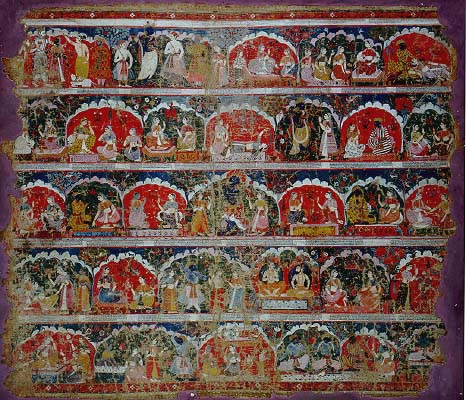
It was a short period, but I have tried to make it valuable and productive. I was assigned to work on Krishna Leela’s painting, and it was quite a challenge to decode the hidden meanings behind this painting. A period of 15 days was not enough to find metaphors and highlight the beauty in every detail of this Krishnallela painting. It is strictly a poetic illustration of 31 out of 36 songs written by the great king and patron of this painting, Siddhi Narasimha Malla, 16th Century, Lalitpur, Nepal.
The Divine Play of Lord Krishna
This painting illustrates the text of thirty-one devotional songs, a genre known as Krishnalila. They concern the divine play (Lila) of Lord Krishna, a beloved incarnation of Vishnu. The songs are said to have been composed by Siddhi Narasimha Malla, ruler of the Patan kingdom from 1619 to 1661, but they are strongly influenced by classical Indian poetry.
The painting is arranged in five narrative registers, viewed from left to right, top to bottom. Each record contains several scenes, separated by exotic vegetation and set against snow-capped mountains. Krishna-coloured blue, superhuman size, and most often playing his flute appears several times (in the second upper left scene, for example). He is sometimes in company with the Gopis, adoring milkmaids who, in the songs, lament their unrequited love. The first scene depots Shiva, his consort Gauri, his mount Nandi, his two attendants and, far right, King Siddhi Narasimha Malla. The king and the numerous Gopis wear Mughal-style dresses like those at the late Malla Period courts. The devotional songs are written in old Newari above the corresponding scenes. Except for the fourteenth-century Gopala Chronicle, they are the oldest Newari texts to be critically studied and translated.
This painting is displayed annually in front of the nearby Krishna temple.
HISTORY OF VAISHNAVITE FAITH IN NEPAL
The spiritual life and art of this tiny ‘Nepal’ have been influenced to an extent by the great religions of India, Buddhism and Hinduism. One part of the population still follows the Hindu, while the other adheres to the Buddhist belief and way of life. A great deal of written evidence and many works of art bear witness to the fact that the two groups of religions had existed in the Nepal valley for a long time. Even though Nepal is the native country of Gautama Buddha, the rivers flowing into the Holy Ganga that have their sources in this tiny Himalayan country guaranteed the early rise of Hinduism in Nepal.
There are two major popular sects among Hinduism, Shaivism and Vaishnavism. Shaivism declares the supremacy of Shiva, worshipped as Pashupatinath (lord of the animals, an adaptation from tribal deity) in the valley. In contrast, the central Creator in Vaishnavism is Vishnu, considered the supreme God by the Nepalese. Vaishnavism comes directly opposite to Shaivism in terms of practices and devotion; it is against the slaughter of animals and strict asceticism (in Nepal) and has a different outlook. The two most important rivers, Bagmati and Bshnumati, named after Vishnu, provide proof of the long-lasting popularization of Vaishnavism in Nepal. Recent finds of Vishnu sculptures and the early establishment of Vishnu temple in all four directions make the evidence even stronger. It is observable that the earliest Licchhavi kings, Haridatta Varman and Manadeva, were named after Vishnu. The Lichhavi were contemporaries of Gupta (the grandson of the founder of the Gupta dynasty in India married a Lichhavi princess); thus, the influence of Gupta art can be seen. Vaishnavism was undoubtedly a cult eminently favourable to kingship and universal authority. What is impeccably seen is the adaptation of Buddhist iconography and similarities in finds in sculpture and architecture of this and later periods. That is the most fascinating and seductive area of my interest, and it justifies the calm aura of this Himalayan valley.
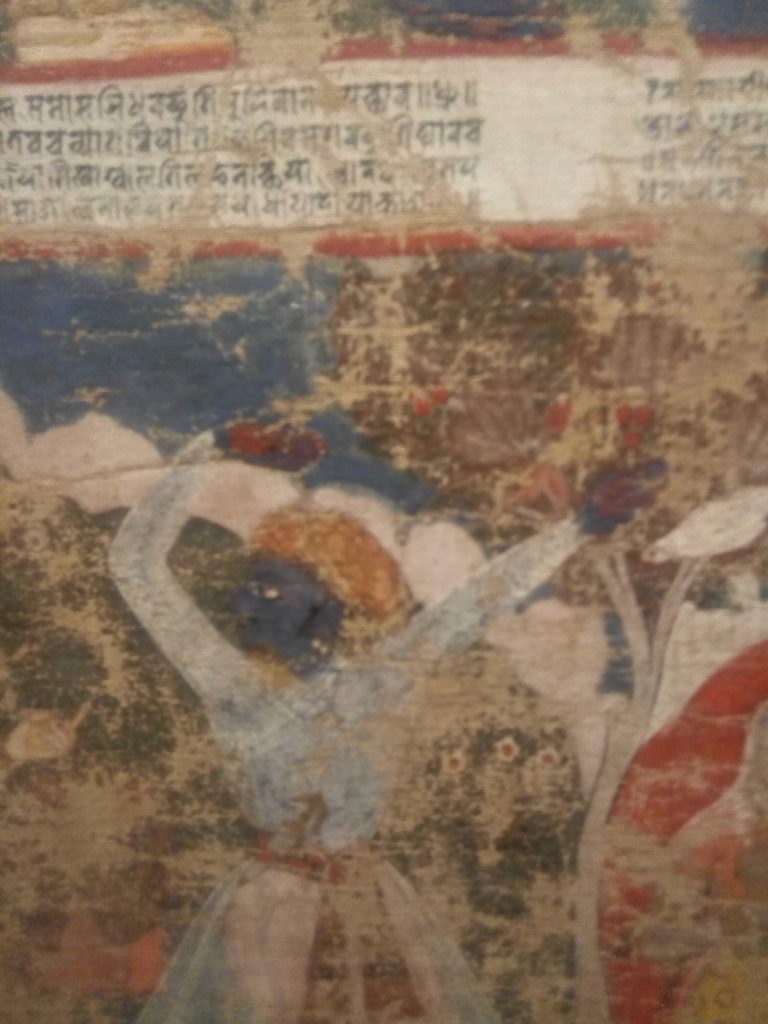
There is a fascinating fact behind the adaptation of religion and having a hard-core belief in its practice; they both come hand in hand. Not only the transformation of Vishnu’s name but the great Lichhavi and later Malla adopted the bona fide qualities of Vishnu as a protector. Man creates religion and gods, but what stands between these two is the undoubtful belief that we put in this universe, which turns our ideas into righteous actions. The interesting, though undoubtedly legendary, story that Haridatta Varman daily visited the four Vishnu temples in the northern, southern, eastern and western parts of the valley fits well with the idea of the God who safeguards the crown, dispenses the power of winning victory and is universally beneficial.
It is, therefore, scarily surprising that, n view of the imitation of Vishnu’s universal influence assumed by the king, several Indian and Nepalese rulers claimed to be earthly images of Vishnu. Like other kings in the Late Malla period, King Jayasthiti Malla (1382-95) logically considered himself a manifestation of Vishnu. This tradition continues to exist in the reigning family, the Shah dynasty. But the periodic decline of Vishnavism and adaptation of other religions have been seen from dynasty to dynasty. It is undoubtedly important to note that the official royal Nepalese house embraces Shiva s their primary deity, whatever the personal religious preferences of changing monarchs. An ultimate decline in the Vishnu cult is noticed during the 14th Century under the Malla dynasty.
Krishna cult was an essential part of Vaishnavism under Hinduism since the Vedic time in India; Krishna became one of the main characters in Bhagavad-Gita and Mahabharata. The Lichhavi kings were familiar with this literature, and Krishna became an essential deity in their art forms; what was absent was an erotic element associated with Krishna. He was seen as a form of God, the 10th reincarnation of Vishnu, who was there to protect this world from evil. The lubricious form of Krishna came to full power and favour in the 17th Century ( under the reign of Siddhi Narasimha Malla). Regarding essence and conduct, Krishna, glorified in deeply felt devotion(bhakti), was quite different from the original heroic God that the Lichhavis knew.
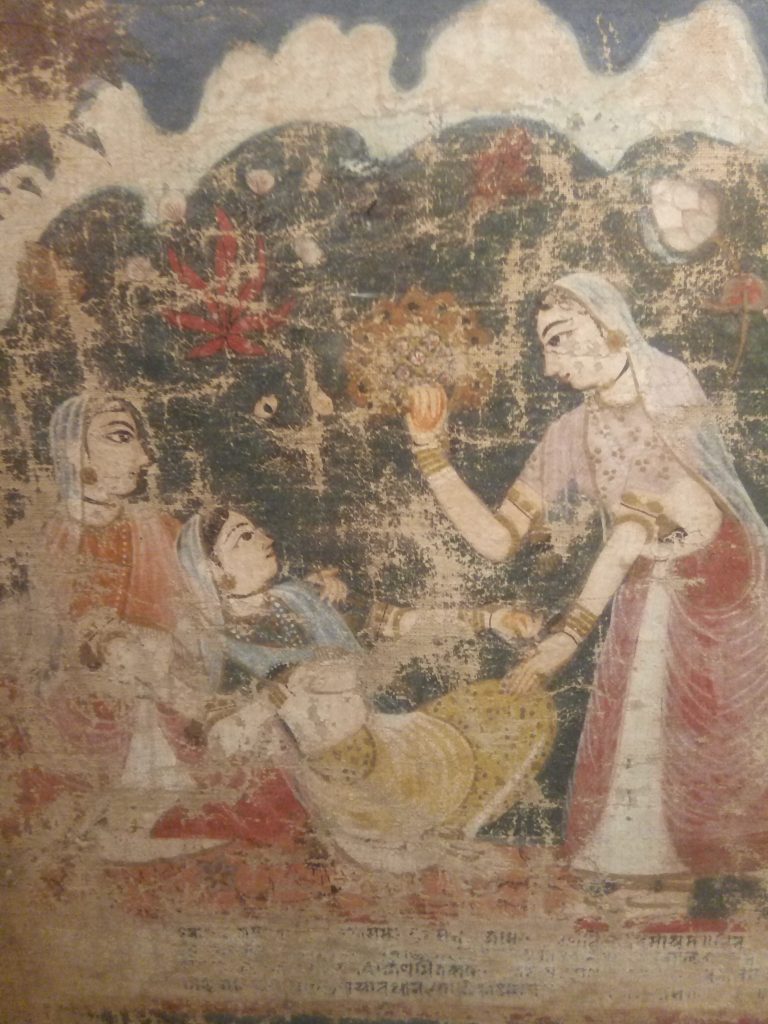
Krishna’s association with Vishnu can be traced back to the first Century before or after Christ. Krishna the cowherd, the beloved of the Gopis, and Krishna, the hero, are different in origin. The life story of the youthful, erotic, to some extent classical Krishna’ is built out of the most diversified elements and only received its final form in certain Puranas- the Harivamsa, the Vishnu and the Bhagawatpurana. His religious background is derived from the Vrindavana. Siegfried Lienhard, page 23, mentions the emergence of the Abhira trine in the Malwa and Deccan region soon after the birth of Christ. At the same time, the fall of the Lichhavi between 506 and 641 allowed a short-lived tribe of the same name, Abhira Gupta. He writes further that it is tempting to identify Abhira Guptas with the Gopala Guptas, the ‘cowherd Guptas’, who is also mentioned in the Nepalese chronicles. Still, it is hard to identify both of them. According to the Hindu tradition, Krishna wits his son Pradyumana who once freed the valley of Nepal from the waters of Lake Nagahrada, thus allowing the Baghmati River to flow out of it.
English translation of Bhashavamshavali by Daniel Wright attempts to show that a group of cowherd coming straight from Dwarka arrived at Kathmandu.
3) EMERGENCE OF SIDDHI NARASIMHA MALLA AS A PATRON AND A DEVOTEE-
Siegfried Lienhard writes that the most decisive part in the development and the spread of the Krishnavite faith in Nepal was played by one single patron King Siddhi Narasimha Malla of Lalitpur. Siddhi Narasimha Malla, like his father, has been a Vaishnavite, and as I have mentioned earlier, the Malla king claimed to be an incarnation of Vishnu. His father named him after the fourth incarnation of Vishnu, Narsimhamalla, while his first name ‘Siddhi’ might have been adopted by his followers because of his ascetic-like qualities. Siddhi Narasimha Malla was awarded the honour of being called ‘the great saint on the lion throne’. The Balagopala temple he erected in front of the palace in 1637 is the most important temple for Krishna worshippers in Nepal Valley. Without being a biased king, Siddhi Malla also erected Shiva and Vishnu temples in Nepal, and the four-storied Krishna temple has reliefs showing beautiful sculptural scenes from Ramayana, Mahabharata and Buddha in a narrative style. Tradition has it that the king was fond of Satsang, associating with holy men. He meditated often and made frequent pilgrimages to Banaras and other important religious centres – an arduous undertaking at that time. He practised a significant amount of donation, was personally unassuming and instructed his officials to keep taxation as low as possible.
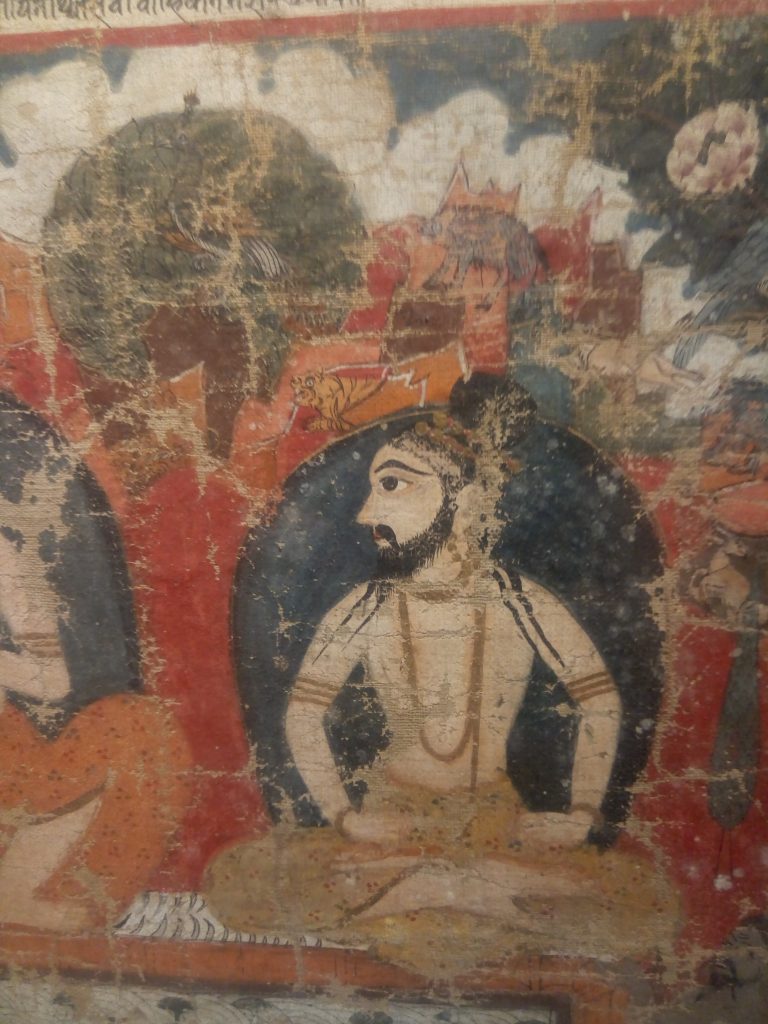
Furthermore, he did not wish his consort Bhanumati and his daughters to wear jewellery. He slept on a stone bed, ate sparingly and regulated his rice intake so that he first increased the portion by one handful a day, only to reduce it again until it consisted of one single handful precisely. Content to possess only the bare necessities, he regarded all worldly goods as a loan entrusted to him as king to be used for the people’s good. Siddi Narasimha Malla’s wisdom, kindness and compassion reveal his ascetic nature. The king was a lover of music, drama and a true devotee of Krishna.
After establishing the Balagopala temple in front of the palace, it has become an important centre for worship. Apart from daily puja in the morning and evening, there are two significant religious ceremonies dedicated to this temple; one is determined by the periodic calendar and the second separate rites performed at no fixed dates, mainly on the request of individual believers. Among the annual festivals are Varsabandhana (during the month of Phalgun), when the anniversary of the Balagopala temple is celebrated with Krishna worship. The Holi festival is often associated with Krishna and is celebrated outside the temple, similar to the Vrandavana, Barsana and Mathura Holi celebrations. On the day of the full moon during the month of May-June, when the Krishnalila painting along with Siddhi Mallas throne is exhibited inside the temple, the swing festival (Dolotsava/doli) during the month of Shravan, on Krishna puja during the month of Bhadra, Gaijatra known as Saparu in Newari, during the month of Bhadra, and Krishna Janmashtami (birth of Krishna) during the month of Sravan are essential. Gaijatra or Saparu is celebrated in memory of dead ancestors in Nepal and India.
The Newari Hindus celebrate the most important festival of Krishna Holi for a whole complete week. The celebration includes:
- Episodes turn into events from the life of Krishna.
- The tree on the banks of the river Yamuna.
- The well-known episode of Vastraharana.
The Krishnavite legends talk about establishing the Holi festival as a victory of Krishna over the demon Putana. King Siddhi Narasimha Malla, the great patron of the Krishna cult in Nepal, built the famous Balagooala temple in Lalitpur and founded a weeklong dance festival in Lalitpur, Nepal. The former glory of the festival suggests that fifty people were supposed to participate in this festival in preparations and celebrations. Each evening episodes from the Krishna legends are presented on the stage in front of the Balagopala temple. They are partly in choreographic form (with music) and somewhat dramatic (with dialogue). Both at the beginning and end of all scenes, all of which are of different lengths, there is an appearance or Pravesa of Krishna, to whom a conclusion and aarti are addressed.
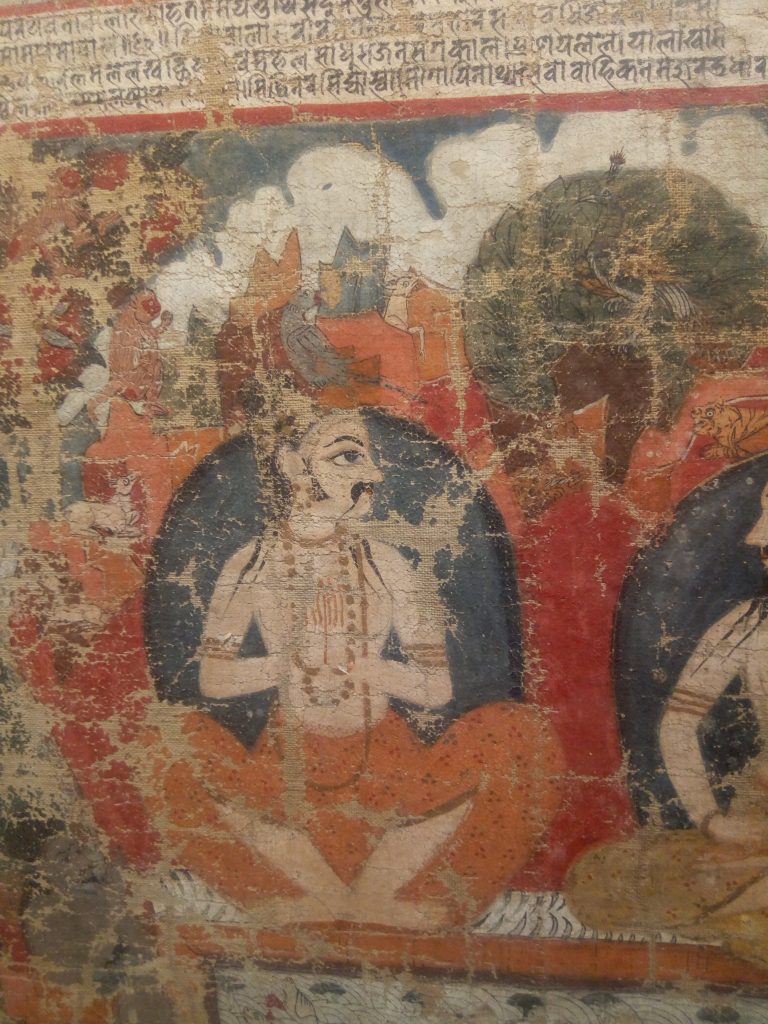
Siegfried Lienhard, page 32, mentions that the songs on which this painting is based are contained in a textbook in not only the Balagopala temple but also the Bhimsen temple in Lalitpur. During the month of magha (january-february), the Balagopala temple song group visits the Bhimsen temple nearby and sings a song or two.
The Balagopala temple group was initially said to be found by the great king himself. The performances by this group take place three times a year, on Jayesthapurnima, on the return of Bodhisattva Avalokiteshwara Karunamaya, and in the month of Kartikk; the song group sings and celebrates the glorification of Krishna in the interior of the temple. As an incarnation of Vishnu and as a Krishna worshipper, the great king Siddhi Malla is respected on the festival of Jyesthapurnima, and several 35 songs are sung in his praise. Scholars have guessed that the songs were written and prepared in such a way so that one piece can be sung each morning in the month of Kartik, followed by a dance and final aarti in the evening.
The original invention and mention of Krishna can be traced down to the 1st Century A.D. along with Vishnu, and the two can’t be separated. Suppose we want to move historically with the origination of Krishna. In that case, we move forward from the 1st Century to the 4th (the era of classical Sanskrit literature, religion was jotted down in the form of stories, glories, and rituals which made deities famously and highlighted). But the birth of the Bhakti movement around the 7th Century, with its origination in south India, was a changing moment for all Indian art; the word ‘Bhakti’ or devotion has a different meaning, a deep philosophical and spiritual meaning which makes all Hindu gods and goddess human. It talks of aeons and various forms of the supreme almighty in each yuga, taking birth as a human to save the world from emerging evil. Mahabharata, Bhagawadpurana, Vishnupurana, and Shivapurana can be said to be the result of such intellectual thinking; in the end, we see the region as a medium to teach us humans our Humanity, how to live in peace and ace us believe in one supreme power who will bard off all evil on earth when required. Mahabharata and Bhagwat Geeta centre Krishna as the main character, still considering him the 8th form of Vishnu (like Rama). It was the dawn of the 15th Century that gave Krishna his own original identity. The Bhakti movement was spread all over India, and Krishna, like Shiva and Vishnu, was seen as an individual supreme caretaker. With the spread of the Bhakti movement from south to north India, Vallabhcharya though, from the south, moved to Uttar Pradesh; he became the teacher of the most critical Bhakti poet in North Kavi Surdas; his Sursagar is like an encyclopedia for Krishna worshippers, Meera Bai from Rajasthan became quite famous for her devotion and love for Krishna, Candidas from Bengal and many more. Surprisingly, all these poets/devotees/ascetics of Krishna lived and practised significantly closer to Nepal.
It cannot be said with complete certainty that Siddhi Malla, who was so attracted to the Krishna cult, was the author of these Krishnalila songs; they could have been one of the court poets. It is certain that during the 11th Century, the Krishna cult had a breakthrough from North India to Nepal (the question is still hazy that Krishna was adopted as an independent god because most of the ruling kings were strict followers of Vishnu in Nepal). Siegfried Lienhard claims that Siddhi Malla was the true original patron of the Krishna cult in Nepal; his devotion and actions resulted in Krishna construction of so many Krishna temples, along with a fruitful influence on poetry, music, drama and dance.
The most profound poetry dedicated to Krishna was written in the 12th Century by Jayadev in north-east India. North-east India was already famous as a Krishnavite centre then, and like most of the Krishna poetry, traditionally Geeta Govinda or the songs of the cowherd Krishna was associated with Orissa dance, Kathakali and other forms of music. Geeta Govinda is taken as one of the pioneers of works on Krishna because of its aesthetic and philosophical beauty. All the different forms of texts, miniature paintings and poetries associated with Krishna were inspired by Geeta Govinda, and Krishnalila songs of Siddhi Narasimha Malla of Lalitpur can be said the follow the same lineage. The king and his court poet must have been inspired by the classic Sanskrit literature and written his devotional songs for Krishna.
Why is Geeta Govinda such an epic, and many poets and painters were inspired by it?
It describes the relationship between Krishna and the Gopis (female cow herders) of Vrindavana, particularly one gopi named Radha. The Gita Govinda is organized into twelve chapters. Each chapter is further subdivided into twenty-four divisions called Prabandhas. The pPrabandhas contain couplets grouped into eights, called Ashtapadis. It is mentioned that Radha is more excellent than Krishna. The text also elaborates on the eight moods of the Heroine, the Ashta Nayika, which has inspired many compositions and choreographic works in Indian classical dances. The work delineates the love of Krishna for Radha, the milkmaid, his faithlessness and subsequent return to her. It is taken as symbolical of the human soul’s straying from its true allegiance but returning at length to the God who created it.
In “Delighting in the Delightful: The Aesthetics of Gita Govinda and Odissi Dance”, Dr Itishree Devi writes, “Gita Govinda, to me, is the culmination of the Concentrated spiritual aspiration of a nation; of neither the masses of people who had no direct access to nor understanding of the highly philosophical ancient Hindu religious-spiritual texts like the Vedas, the Upanishads or even the Bhagavad Gita. Its appeal, as indeed the poet Jayadeva meant it to be, was to the emotion, to the Bhava, the devotional fervour which can circumvent the Rigors of formal education to reach the highest human goal: the realization of the Oneness of the Supreme Godhead and his Creation. The Gita Govinda, in as much as Jayadeva wrote it, is yet the cultural self-expression of a people restless and seeking a simple yet effective path of self-realization.”
“The Gita Govinda describes the chief among all emotions, “Love”; hence its widespread appeal throughout the nation, paralleled only by the philosophical text of the Bhagavad Gita. “Rasa”, the flavour of a pervading
Emotion or “Bhava” is at the heart of the Gita Govinda.” As Barbara Stoller-Miller points out: “The Sanskrit poets came to realize the unique power and the aesthetic potential of sexual passion (rati-bhava) in its aspects of pain and pleasure. The erotic mood that emerges from desire was expressed in the antithetical modes of separation and expressive creation of the Gita Govinda in The 12th Century, formed the perfect third apex of the “Prism” that absorbed and reflected the Divine essence, creating a myriad-coloured spectrum of the rainbow.”
Sri Aurobindo writes: “The first and lowest use of art is purely aesthetic, the second is the intellect or educative, the third and the highest the spiritual.” However, while saying this, he does not undermine the value of aesthetics in Humanity. He relates Aristotle’s idea of art as a means for the purification of feelings, passions and emotions with the justification of the aesthetic side of art. He says, “Many thinkers hold the beautiful and the good to be the same”. We can draw here a parallel with the
Famous lines by John Keats “Beauty is truth, truth beauty – that is all ye know on earth and all ye need to know”. To quote Sri Aurobindo again:
“According to our philosophy, the whole world came out of “Ananda” and returns into Ananda and the triple term in which Ananda may be stated
It is Joy, Love, and Beauty. To see divine beauty in the whole world, man, life, nature, to love that (which) we have seen, and to have pure unalloyed bliss in That love and that beauty, is the appointed road by which Humanity as a race must climb to God.” It is this pure unalloyed love, beauty and bliss that The Gita Govinda achieves and that all dance exponents must assay to accomplish through their performance, both for themselves and for the Audience.
The pleasure of the senses must be replaced by the “Akhanda Rasa”, undifferentiated and unabridged delight in the delightfulness of things”,- says Sri Aurobindo. Undoubtedly the “Gita Govinda”, in its renderings in music and dance, has been eminently successful in delighting us with this delight, arousing in us the “Akhanda Rasa”. Why are several scholars making a comparison of this Krishnalila song with that of Gita Govinda? Well, as Siegfried Lienhard points out, “Where form is concerned, there are in the Gitagovinda’s hymns three essential characteristics that appear in later Krishna poetries, including Siddinarsimha’s Newari poems:1) the stanzas make use, not only of the alliteration that had been popular since ancient times, but also internal rhyme, often copious;2) they are intended to be sung as the details concerning rhythm and raga indicate, and 3) the name of the author is always made known in a sort of signature, skit. Bhanita, in the last stanza or the last line.
The Newari poems on the painting from Lalitpur, composed in complex, often artistic language, go back rather to models in the neo-Indo-Aryan languages, above all to the Krishna poetry of the Vidyapati mentioned above Thakur, who came from the nearby Hindu kingdom of Tight or Maithili in Northern Bihar. In his work, Vidyapati, a Shiite devotee, also wrote in Sanskrit and Apabhramsa, but mainly in Maithili, the language of Tight. Maithili was also used as a sign language during the reign of Siddhinarsimha, and the Maithili form of folk art was an influence that was visible too. As Jayadeva has once done, Vidyapati has also successfully fused the conventional themes of Indian love poetry and the Krishna tradition cherished by the broad sections of the population. His verses spread far outside the frontier of Tight. As previously mentioned, stanzas in Maithili have been ascribed to King Siddhinarshima Malla too.
Siegfried also points out that the word Bhanita mentioned in the last line of the first stanza has a different meaning than that mentioned in classical Indian poetries; here, it is ascribed to Pashupati-Shiva and Gauri differently.




